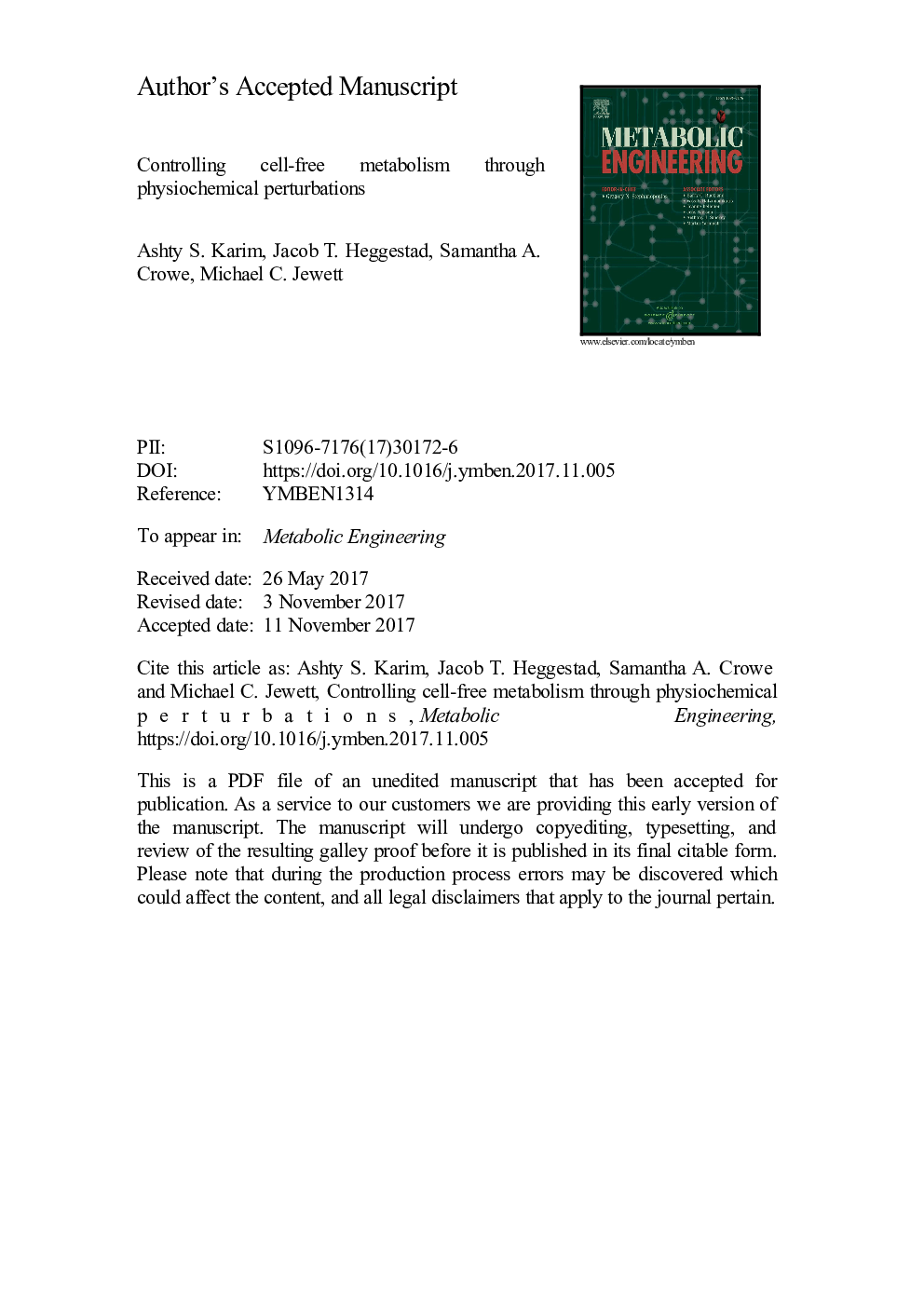| کد مقاله | کد نشریه | سال انتشار | مقاله انگلیسی | نسخه تمام متن |
|---|---|---|---|---|
| 6494129 | 1418334 | 2018 | 26 صفحه PDF | دانلود رایگان |
عنوان انگلیسی مقاله ISI
Controlling cell-free metabolism through physiochemical perturbations
ترجمه فارسی عنوان
کنترل متابولیسم سلولی از طریق اختلالات فیزیکی شیمیایی
دانلود مقاله + سفارش ترجمه
دانلود مقاله ISI انگلیسی
رایگان برای ایرانیان
موضوعات مرتبط
مهندسی و علوم پایه
مهندسی شیمی
بیو مهندسی (مهندسی زیستی)
چکیده انگلیسی
Building biosynthetic pathways and engineering metabolic reactions in cells can be time-consuming due to complexities in cellular metabolism. These complexities often convolute the combinatorial testing of biosynthetic pathway designs needed to define an optimal biosynthetic system. To simplify the optimization of biosynthetic systems, we recently reported a new cell-free framework for pathway construction and testing. In this framework, multiple crude-cell extracts are selectively enriched with individual pathway enzymes, which are then mixed to construct full biosynthetic pathways on the time scale of a day. This rapid approach to building pathways aids in the study of metabolic pathway performance by providing a unique freedom of design to modify and control biological systems for both fundamental and applied biotechnology. The goal of this work was to demonstrate the ability to probe biosynthetic pathway performance in our cell-free framework by perturbing physiochemical conditions, using n-butanol synthesis as a model. We carried out three unique case studies. First, we demonstrated the power of our cell-free approach to maximize biosynthesis yields by mapping physiochemical landscapes using a robotic liquid-handler. This allowed us to determine that NAD and CoA are the most important factors that govern cell-free n-butanol metabolism. Second, we compared metabolic profile differences between two different approaches for building pathways from enriched lysates, heterologous expression and cell-free protein synthesis. We discover that phosphate from PEP utilization, along with other physiochemical reagents, during cell-free protein synthesis-coupled, crude-lysate metabolic system operation inhibits optimal cell-free n-butanol metabolism. Third, we show that non-phosphorylated secondary energy substrates can be used to fuel cell-free protein synthesis and n-butanol biosynthesis. Taken together, our work highlights the ease of using cell-free systems to explore physiochemical perturbations and suggests the need for a more controllable, multi-step, separated cell-free framework for future pathway prototyping and enzyme discovery efforts.
ناشر
Database: Elsevier - ScienceDirect (ساینس دایرکت)
Journal: Metabolic Engineering - Volume 45, January 2018, Pages 86-94
Journal: Metabolic Engineering - Volume 45, January 2018, Pages 86-94
نویسندگان
Ashty S. Karim, Jacob T. Heggestad, Samantha A. Crowe, Michael C. Jewett,
